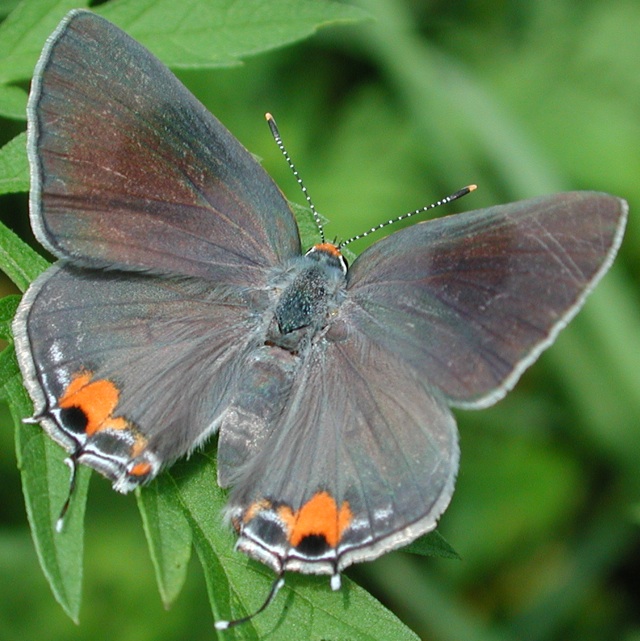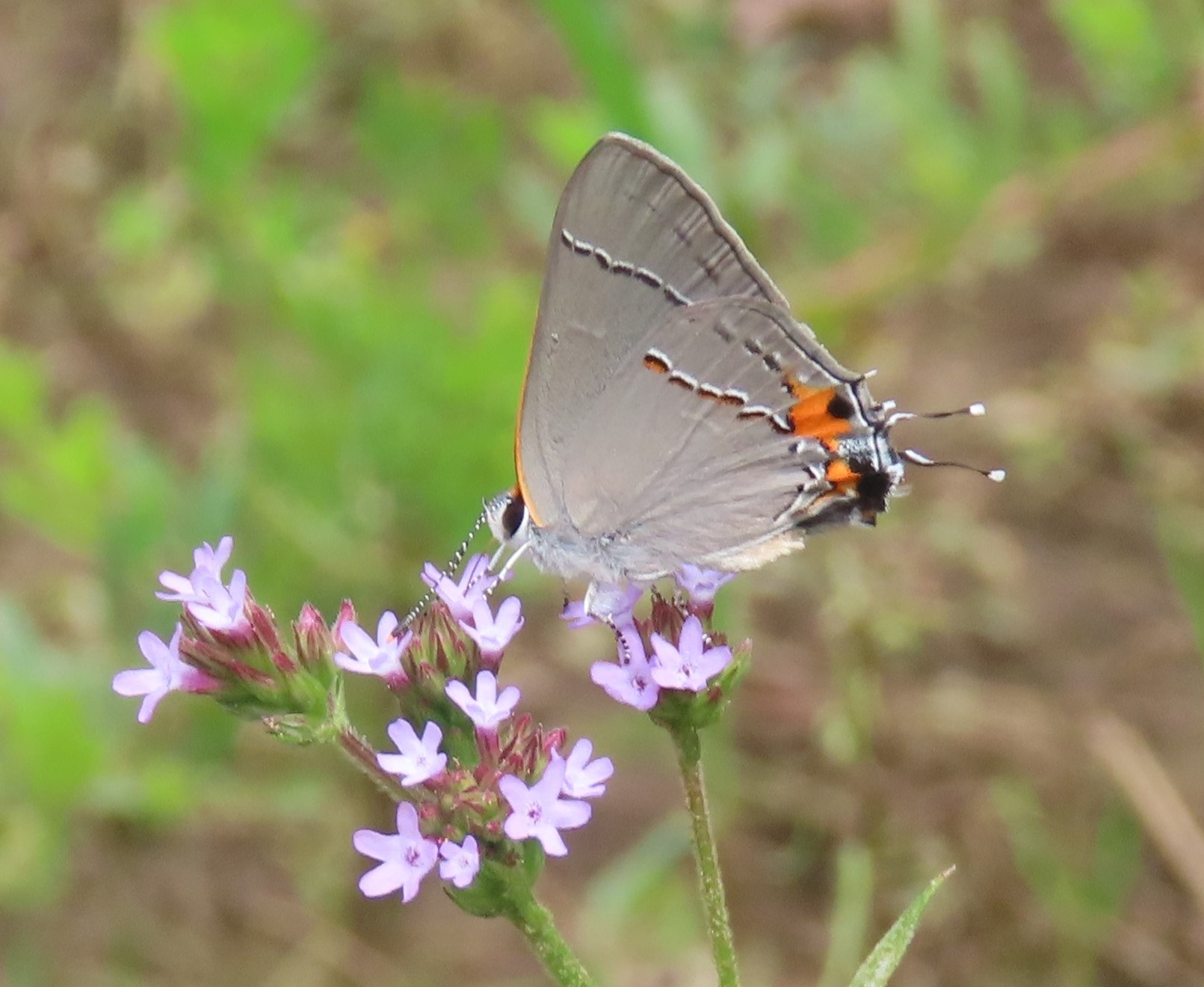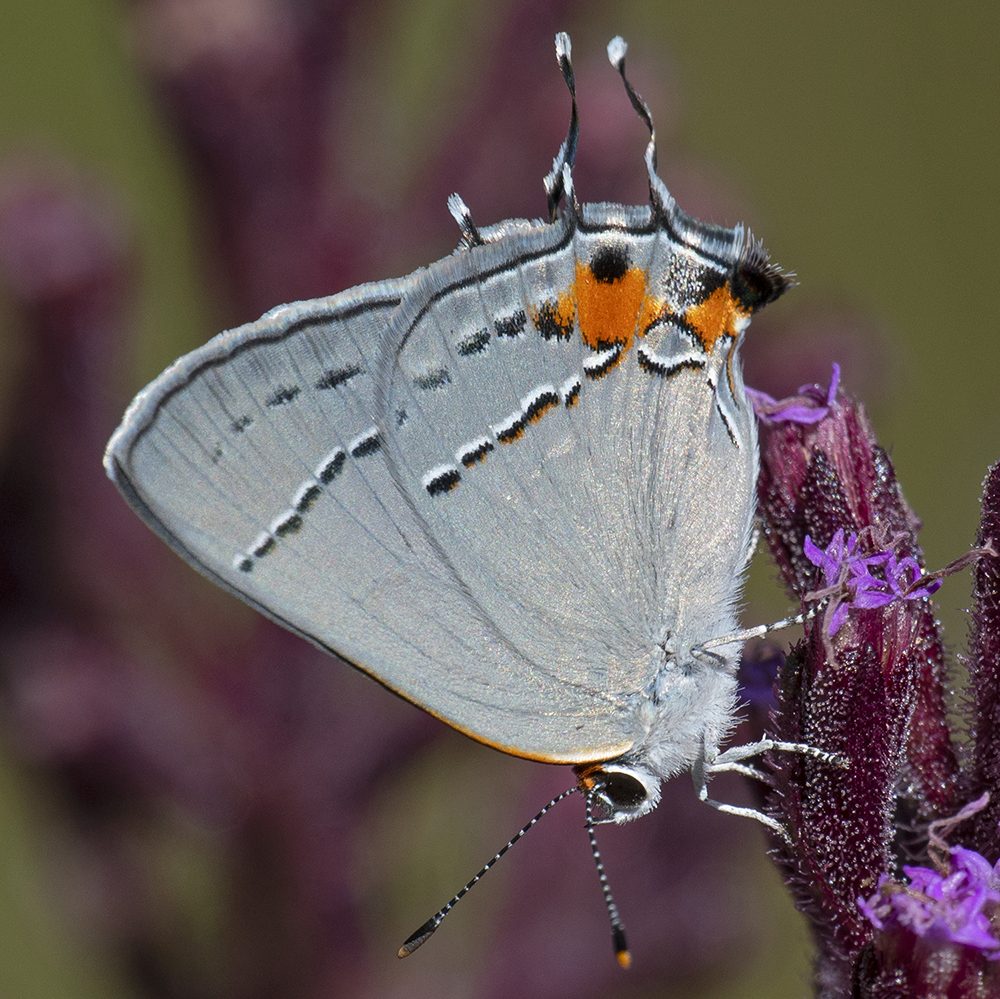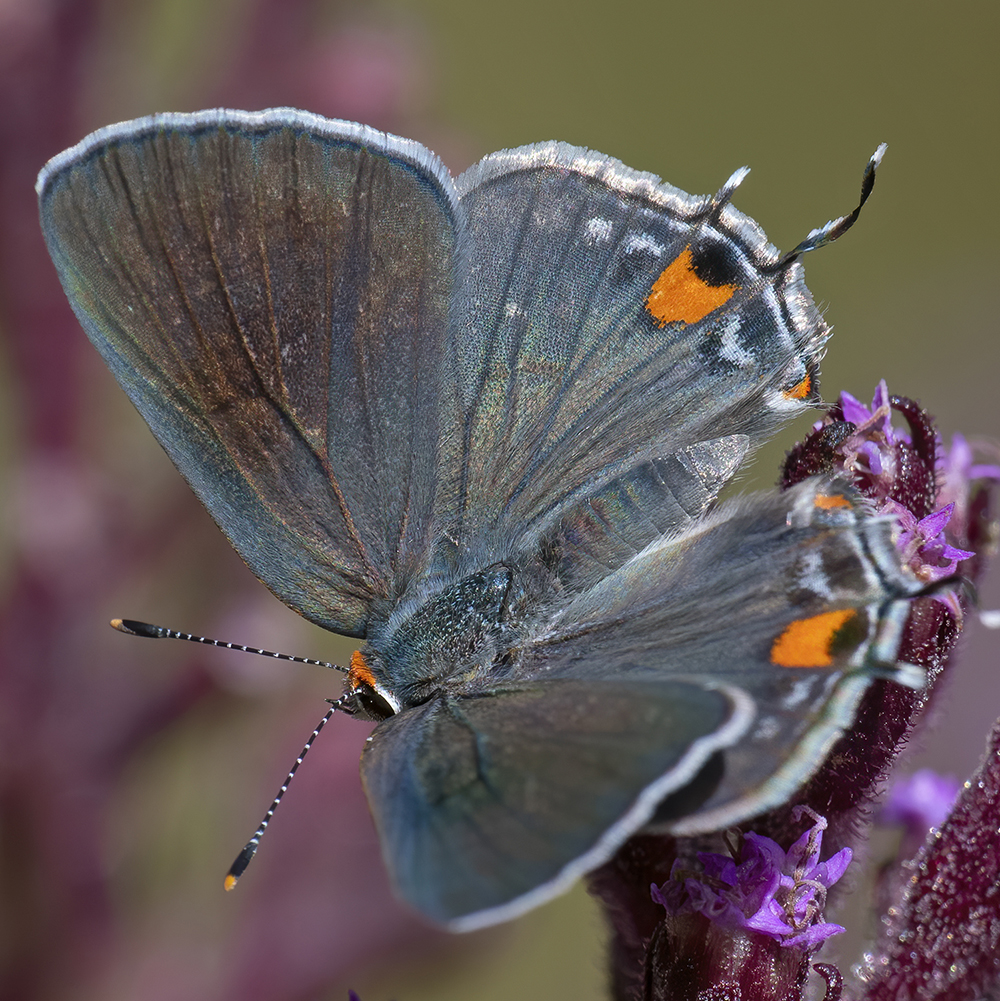| Common Name begins with: [ A ] [ B ] [ C ] [ D ] [ E ] [ F ] [ G ] [ H ] [ I ] [ J ] [ K ] [ L ] [ M ] [ N ] [ O ] [ P ] [ Q ] [ R ] [ S ] [ T ] [ V ] [ W ] [ Y ] [ Z ] |
| Scientific Name begins with: [ A ] [ B ] [ C ] [ D ] [ E ] [ F ] [ G ] [ H ] [ J ] [ L ] [ M ] [ N ] [ O ] [ P ] [ S ] [ T ] [ U ] [ V ] [ Z ] |
| Once on a species account page, clicking on the "View PDF" link will show the flight data for that species, for each of the three regions of the state. Other information, such as high counts and earliest/latest dates, can also been seen on the PDF page. |
| Related Species in LYCAENIDAE: | |
|---|---|
<<   >> >> | |
| Links to other butterfly galleries: [Cook] [Lynch] [Pippen] [Pugh] | |||
| Photo Gallery for Gray Hairstreak | |||
 | Photo by: Roger Rittmaster Comment: Durham Co. Gray Hairstreak - Click to enlarge |  | Photo by: Scott Hartley Comment: Weymouth Woods-Sandhills Nature Preserve, Moore Co.; 2005-July-23 Gray Hairstreak - Click to enlarge |
 | Photo by: Lori Arent Comment: 2020-08-20. Wake Co. Gray Hairstreak - Click to enlarge |  | Photo by: Mark Shields Comment: 2020-09-20. Onslow Co. Gray Hairstreak - Click to enlarge |
 | Photo by: Mark Shields Comment: 2020-09-20. Onslow Co. Gray Hairstreak - Click to enlarge | ||